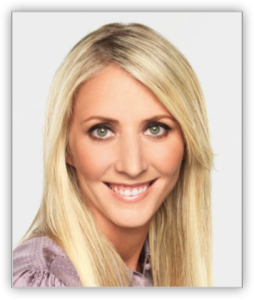How Much Of What I Say Does My Child Understand? Part 2 of 2 – Ask Sarah Series
 This week, I’m continuing to answer Mary’s question from last week about how much her son, who has been recently diagnosed with autism, can understand when she speaks to him, and how she should talk to him. I explained to Mary that her son’s speech and language evaluation will provide information about her son’s receptive language and auditory comprehension, and that his “age equivalency” scores are a useful shorthand for his abilities in this area. Let’s take a look a test that is very commonly administered by speech-language pathologists to measure this, and see what those scores mean.
This week, I’m continuing to answer Mary’s question from last week about how much her son, who has been recently diagnosed with autism, can understand when she speaks to him, and how she should talk to him. I explained to Mary that her son’s speech and language evaluation will provide information about her son’s receptive language and auditory comprehension, and that his “age equivalency” scores are a useful shorthand for his abilities in this area. Let’s take a look a test that is very commonly administered by speech-language pathologists to measure this, and see what those scores mean.
A test commonly given to young children is the Preschool Language Scale – Fifth Edition, usually abbreviated as the PLS-5. If your child wasn’t administered this test, that’s OK – the other tests commonly given to preschool-aged children present their results in a similar way. The front page of the results for your child from the PLS-5 will look like this:
| Standard Score | Percentile | Age Equivalent | |
| Auditory Comprehension | — | — | — |
| Expressive Communication | — | — | — |
Take a look at your child’s age equivalency scores for auditory comprehension. Age equivalency scores take a child’s performance on a test, and match that performance level to the average or typical child of a given age. Put another way, it says that your child has the same auditory comprehension skills (or whatever other skill is being reported) as the average child of that age. Here’s an example of the scoring of a hypothetical child with an autism spectrum disorder:
| Standard Score | Percentile | Age Equivalent | |
| Auditory Comprehension | 50 | 1 | 6 months |
| Expressive Communication | 50 | 1 | 10 months |
Looking under the Age Equivalent column (you can ignore the other stuff for now), we can see that this hypothetical child is understanding language at the same level as an average 6 month old. But this child just had his third birthday! What do you think is going to happen if people talk to him using a lot of language – or at least as much language as they would assume a typical three-year-old would understand? That’s right – most of it will go completely over his head.
To effectively communicate with this child, you need to use the same language you would use with a typical 6 month old. Because that’s all he’s currently capable of understanding. Anything beyond that is probably confusing him more since he doesn’t know which words are the important ones. To effectively communicate with him, which is the first step in helping to build on his understanding and getting those age equivalency scores closer to his chronological age, you would want to use very simple language and use visuals as much as possible to help aid his understanding.
So how does this apply to your own child? Get a copy of his or her speech and language evaluation, and look at the age equivalency scores for auditory comprehension and/or receptive language. Ask your child’s speech therapist to explain it if you’re not sure. And then guide your own speech to your child’s current level based on your new, better understanding of your child’s auditory comprehension and receptive language skills.
This means that if your child currently has the auditory comprehension of a one-year-old, please don’t speak to your child in full sentences! Instead try to remember to speak at a level your child has a chance of understanding. Unfortunately, I see parents not doing this all the time. Their child is just barely starting to speak, but the parent is talking to the child in very long, complex sentences. That would be fine with a typically-developing child who doesn’t have any deficits, but it’s not going to help for your child if he or she has the language deficits typically associated with children on the autism spectrum. My rule of thumb is to talk to a child using sentence lengths which are one word longer than the lengths of the sentences they are currently using.
Next time, I’ll share what this might look like with your child.
For more information on this series, please see our introductory post, The Ask Sarah Series.
If you have a question for Sarah, you can submit your questions to Ask Sarah.

